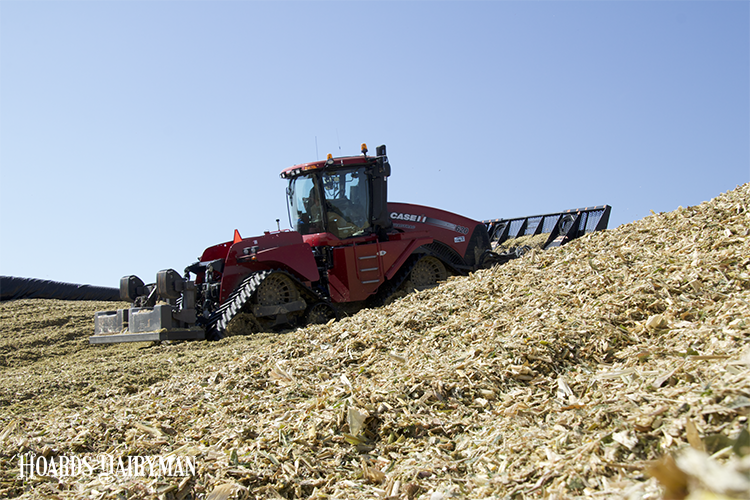
Fermentation is a crucial step in turning fresh chopped silage into a more nutritious, more digestible feedstuff for our dairy cows. One way farmers can aid that process is through the use of inoculants.
With any investment, though, the pros and cons must be weighed. During the August Hoard’s Dairyman webinar, a listener asked, “What are the advantages and disadvantages of inoculants?”
John Goeser, the animal nutrition director at Rock River Laboratory and an adjunct professor at the University of Wisconsin-Madison, said that was a great question. Following years of research and a growing number of products on the market, more and more farms are considering inoculants, and for good reason.
Goeser said there are two objectives when using silage inoculants: upfront fermentation following harvest and feed stability and cleanliness at feedout.
As for advantages, he listed several. One of the primary benefits is dry matter recovery, or in other words, reducing dry matter losses. Goeser explained that after chopping, there are dry matter fermentation losses; ideally, those are limited between 4% and 7% of dry matter. Still, for every 100 tons harvested, 4 to 7 tons never make it to the feedbunk.
If an inoculant is not used or the feed is not sealed properly and successful fermentation is not achieved, losses could soar upward of 10% to 15%. “That means, for every 100 tons harvested, a farm might lose 10 to 15 tons just due to microbes chewing up digestible nutrients,” Goeser said.
The other main advantage is feedout stability. “Lactobacillus buchneri, a type of bacteria in an inoculant, has been really well documented to prevent yeast and mold growth when opening silos,” Goeser explained. He noted that the Midwest and Northeast historically have high yeast and mold levels in silage due to temperate growing conditions coupled with a fairly humid environment.
These problems can surface when a silo, bunker, or pile is opened up and feeding begins. “Inoculants are another strategy we can take to keep feed cleaner upon opening silage back up,” he said.
For disadvantages, Goeser listed one: cost. He said inoculants can cost anywhere from 25 cents per ton to upward of $3 per ton, depending on the product and the farm’s objectives.
Beyond the price tag, Goeser does not consider there to be disadvantages in using inoculants, especially in years like this when corn is costly.
“With $6 corn, we need to preserve every ton of valuable silage that comes out of the field,” he said. “This is definitely the year to invest in inoculants.”
To learn more about harvesting and preserving corn silage, watch the Hoard’s Dairyman webinar, “Make the most of this year’s corn silage.”








